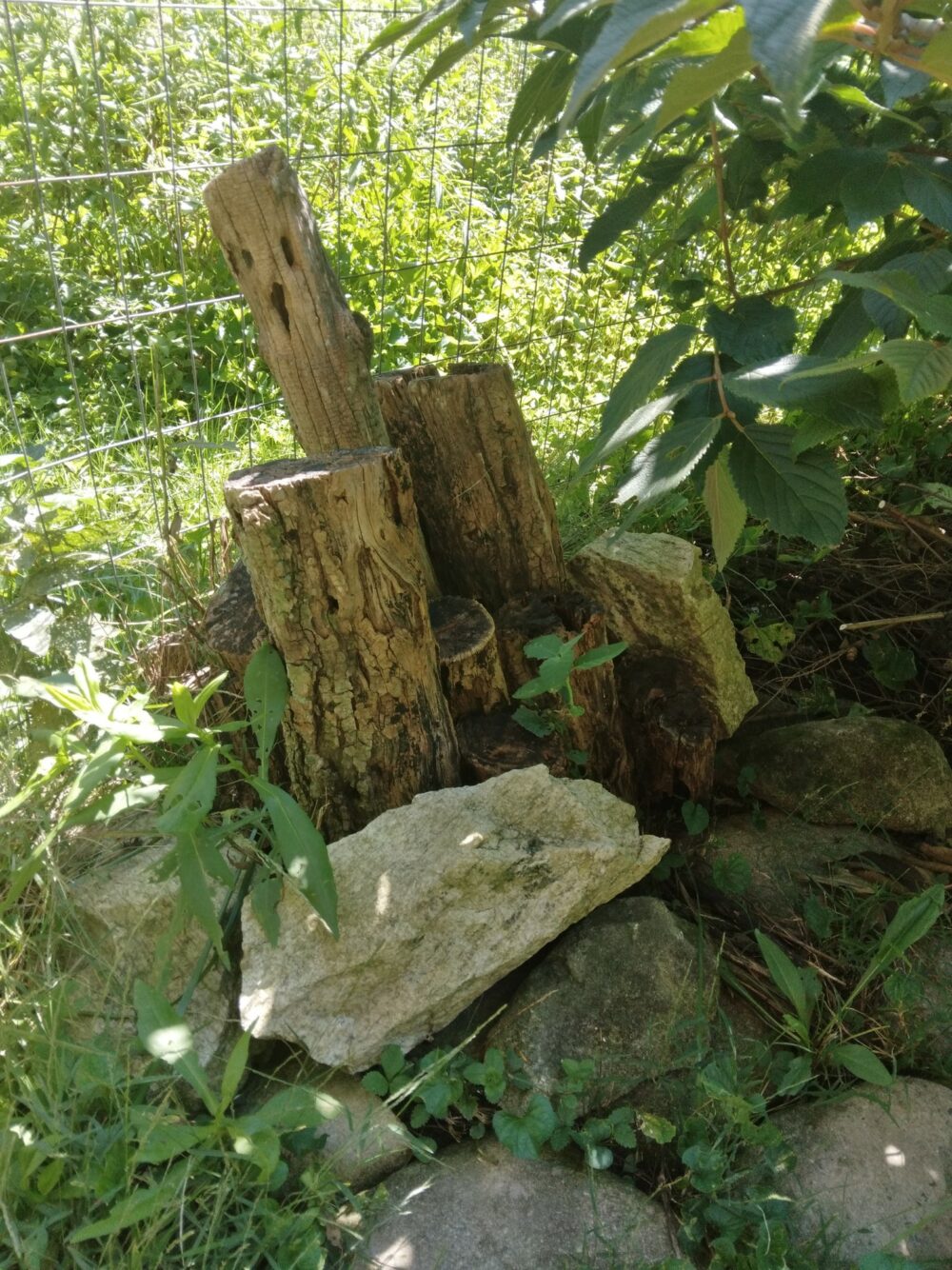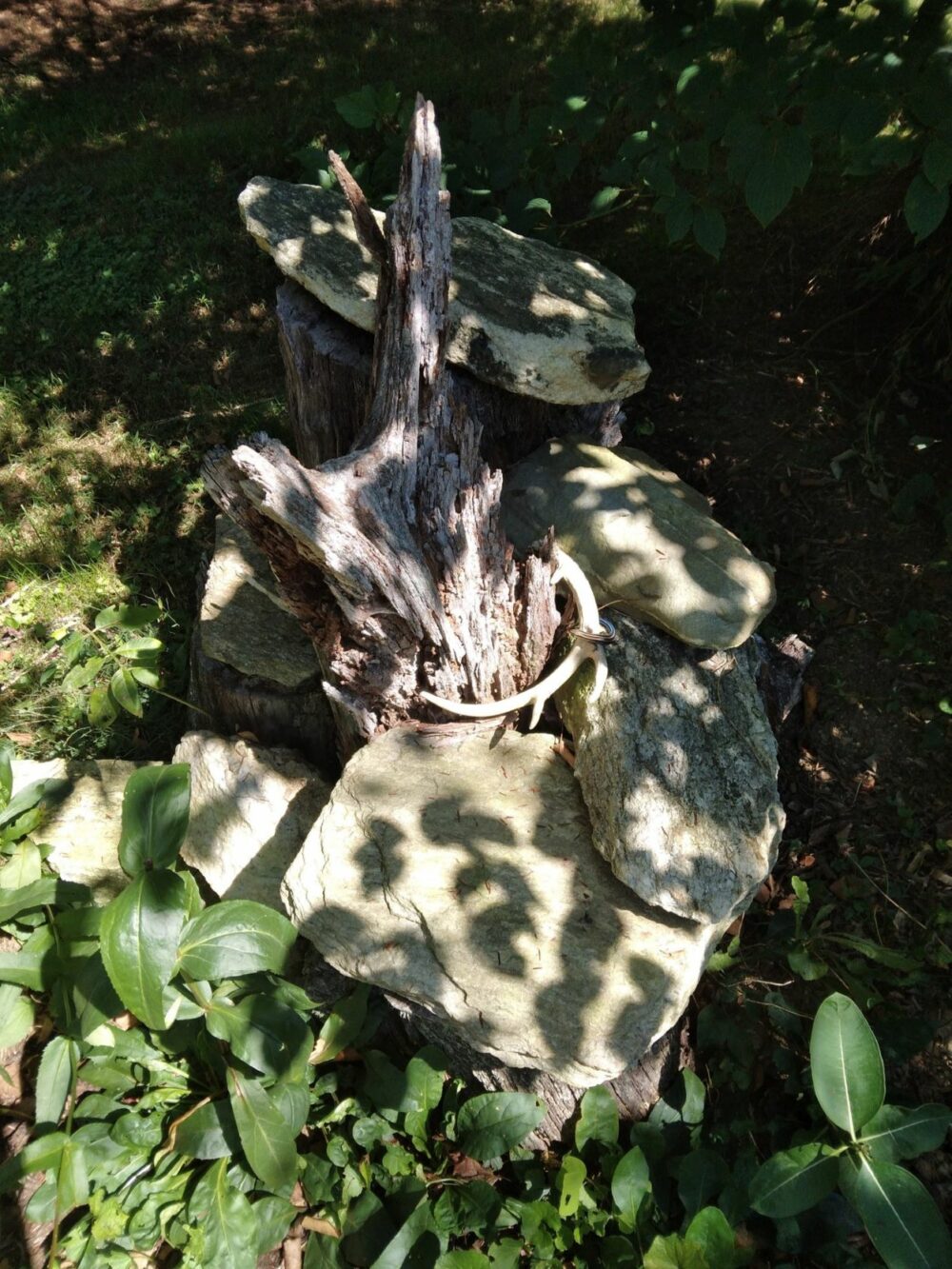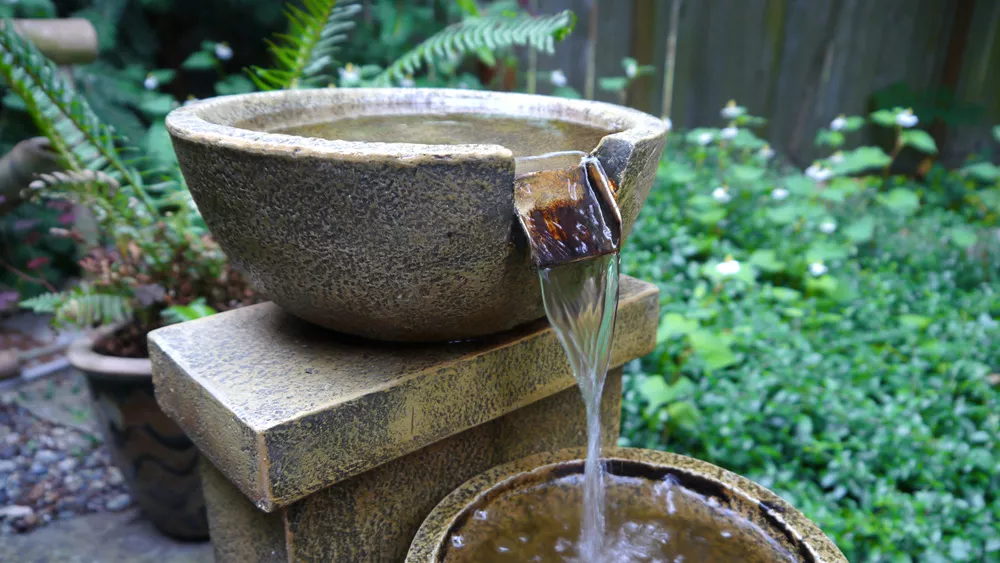Piles of Stuff Make for Great Backyard Habitats!
Rockeries, Stumperies, Leaves, and Brush Piles Enhance Your Backyard Habitat

From putting down the leaf blower to making piles of rocks, there are so many ways to help our local wildlife thrive and meet their needs. This article highlights some of the easiest ways to create habitats right in your own backyard using materials that are already taking up space. They can be large or small, messy or artful, it’s up to you. The animals won’t mind!
Stumperies and Rockeries
If you are looking to add some multipurpose décor to your yard, look no further than rockeries and stumperies. These clusters of rocks and wood will create safe spaces for flora and fauna. The tiny nooks and crannies are perfect hiding places for small creatures like insects, small mammals, frogs, and more. And, in the case of stumperies, as they decay more wildlife will flock to and inhabit the ever-changing logs. All you need to do is create a grouping of different stumps, logs, or rocks and you’ve created a habitat. Adding food sources such as seed or bone waste will speed up the process and draw creatures to your new habitat even sooner!

Both can host a wide variety of organisms, but rockeries cater specifically to our ectothermic friends, such as frogs, lizards, and snakes, as the rocks make perfect sunning spots and absorb the sun’s heat. Rockeries will also last much longer, since they do not decay. Stumperies can be customizable depending on what materials are used. For example, red maple decays quickly, and black locust decays slowly with more nooks for animals to hide in. Either way, using wood or rocks that are of varying height, width, and state of decay is important. The more variety in your rockery or stumpery, the more organisms the habitat can cater to.

Leaves and Brush Piles
Leaves and brush piles are perhaps the easiest ways to assist local wildlife. They adopt the “do more by doing less” approach. This autumn, leave your leaves where they fall! They provide cover for small animals and insects during these chilly months, especially amphibians and pollinators. Not to mention the noise and fumes that leaf blowers create are unpleasant and not good for the environment.

Brush piles serve a similar purpose, just consolidated to a specific area. These piles can be created from just about anything: prunings, leaves, branches, any woody debris really. This is a great option if any leaf removal is necessary. They are especially helpful for ground nesting birds and small creatures. Brush piles can be referred to as “lazy gardening”, because nature does all of the work. As the nutrient cycle occurs, the matter decomposes and breaks down, enriching the soil to create the perfect fertilizer.

Water Features
Fishless water features are beautiful backyard additions and create habitats for amphibians, reptiles and insects. These organisms, as well as the moving water, will help to manage local mosquito populations. Water features will also provide drinking water to animals in the area. And they are easy to incorporate into other Habitat at Home elements, like stumperies or rockeries.
